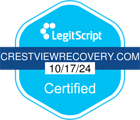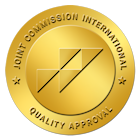When people think of co-occurring disorders, they often think of a substance issue and a mental health issue. However, that is not the only type of co-occurring disorder. Another example of a co-occurring disorder is polysubstance abuse.
Polysubstance abuse involves the use one multiple drugs or illicit substances either simultaneously, or one right after the other. This practice is not only dangerous since different substances can interact in unpredictable ways, but it also greatly increases the chances of other significant issues such as addiction.
Understanding the causes, risks, and addiction treatment options for polysubstance abuse is crucial for both individuals struggling with addiction and their loved ones, and in this blog, we will do just that. So, keep reading to learn more not just about polysubstance abuse but also how you or a loved one can get help at Crestview Recovery.
What is Polysubstance Abuse?
Polysubstance abuse refers to the misuse of more than one substance either at the same time or within a short period. Unlike a substance use disorder, polysubstance abuse doesn’t involve a dependency or addiction to a single substance, but rather a pattern of consuming multiple drugs, often without a clear preference.
This type of substance abuse is fairly common among those who are looking to either enhance or counter the effects of another drug (i.e. chasing a downer with an upper). Doing so, though, can cause dangerous, possibly deadly interactions, not to mention increased side effects and a higher chance of an overdose.
Some common examples of polysubstance abuse include:
- Alcohol and prescription drugs
- Stimulants and depressants
- Illicit drugs and over-the-counter drugs
Why Do People Use Multiple Substances?
Polysubstance abuse occurs for many different reasons ranging from experimentation to looking to enhance the effects of one of the substances. Let’s take a look at some of the more common reasons for the existence of polydrug use:
- Enhanced Effects – One of the more common reasons, often someone may mix substances together to get a more intense “high” (i.e. taking an opioid with alcohol to increase the calming effect).
- Counteracting Effects – On the flip side of that, some people mix substances to decrease the effects of one of the substances (i.e. taking an upper with a downer).
- Accidental Use – Unfortunately, this is fairly common when it comes to street drugs. Someone may unknowingly take multiple substances if the substance they are taking is cut with or laced with something else.
- Mental Health Struggles – People with anxiety, depression, or other mental health disorders may mix substances to self-medicate.
- Peer Pressure and Social Influence – Social settings often encourage drug mixing, especially in party or club environments.
- Tolerance and Dependence – Over time, a person may develop a tolerance to one drug and start using additional substances to achieve the desired effect.
Is Polysubstance Abuse More Dangerous than Substance Abuse?
In short, the answer here is yes. Polysubstance abuse is more dangerous than single substance abuse due in large part to the way in which the substances interact and the strain they can put on the body. However, that is just one of several reasons why polydrug use comes with added dangers.
Some of the other reasons include:
- Worsening Mental Health Conditions – Using multiple substances can lead to worsened anxiety, depression, and cognitive impairments.
- More Complicated Treatment Process – Withdrawal from multiple substances can be more complex, making both detox and treatment more challenging.
- Increased Risk of Overdose – Mixing substances can amplify their effects, leading to respiratory depression, heart failure, or other life-threatening conditions.
How Does Polysubstance Abuse Affect the Brain?
When a person abuses a single illicit substance, that abuse can lead to significant changes in brain chemistry, causing the exacerbation of any existing mental health issues, as well as the development of various physical ailments. When mixing multiple substances together, those issues can intensify due in large part to the unpredictability of the interaction of the various substances.
This can lead to serious issues in the brain including:
- Cognitive Decline – Memory loss, impaired decision-making, and decreased motor function are just some of the cognitive issues that can arise from polysubstance abuse.
- Neurotransmitter Disruptions – Different substances affect dopamine, serotonin, and GABA levels, leading to increased euphoria, sedation, or agitation.
- Increased Dependency – Polysubstance use can rewire the brain’s reward system, making it harder to quit and increasing the likelihood of addiction.
What are the Signs of Polysubstance Abuse?
In order to be able to properly address any polysubstance abuse issues, it is important to know the signs to look out for. The earlier you can recognize and identify these issues, the better the chances are for you or someone you know to get proper treatment.
Some of the common signs of polysubstance abuse include:
- Changes in sleep patterns
- Frequent intoxication
- Mood swings
- Erratic behavior
- Engaging in risky activities such as driving under the influence
- Neglecting daily responsibilities
- Increased tolerance
- Withdrawal symptoms
- Fatigue
- Nausea and vomiting
- Muscle aches and cramping
- Poor hygiene
- Extreme weight loss or gain
- Financial difficulties due to substance abuse
Can You Overdose on Multiple Substances?
Not only can you overdose from polydrug use but, as we touched on earlier, the odds of an overdose when mixing multiple substances greatly increase compared to just abusing a single substance. This is due, in large part to the unpredictable ways the substances interact and the added strain it places on the body.
While mixing substances of any kind can be dangerous, some of the more dangerous and potentially deadly interactions occur when depressants like opioids and benzodiazepines are mixed with alcohol as they are both depressants and can cause heart rate and breathing to slow greatly or even stop altogether.
Symptoms of a polysubstance overdose may include:
- Difficulty breathing
- Extreme drowsiness or unconsciousness
- Seizures
- Irregular heartbeat
- Vomiting
- Blue or pale skin
If you or a loved one are experiencing any of the above symptoms, call 911 immediately.
How is Polysubstance Abuse Treated?

Since polysubstance abuse often comes with added complications as we touched on earlier, it often requires a specialized form of treatment in order to address the multiple mental and physical issues that it can cause.
As a result, polysubstance abuse involves the following dual diagnosis treatment modalities:
When dealing with the abuse of multiple substances, undergoing professional, medical detox is even more important. Since the interaction of multiple substances can potentially have deadly consequences when withdrawing having access to medical care and monitoring is crucial for not just safety but comfort as well.
In some instances, this may include the administering of medications in order to treat or alleviate some of the more severe withdrawal symptoms and may continue even after detox is completed as part of a Medication-Assisted Treatment (MAT) program.
Detox for polysubstance abuse can be done at certain medical facilities, dedicated detox centers, and treatment centers that offer detox services.
Behavioral therapies such as cognitive-behavioral therapy (CBT) and dialectical behavior therapy (DBT) help those in treatment for polysubstance abuse better understand the underlying cause or causes of their addiction. From there, with the help of therapists and other treatment professionals, they can then develop coping strategies for dealing with triggers in a more healthy manner, without the use of drugs or alcohol.
Having a strong support system in place is crucial when it comes to recovery of any kind. Both during and after treatment, support groups can provide the support system needed in order to maintain long-lasting sobriety.
What Role Does Mental Health Play in Polysubstance Abuse?
As is the case with all forms of substance abuse and substance use disorder, mental health plays a significant role in polysubstance abuse as well. Many who use multiple substances at once do so as a way to self-medicate in order to address any mental health conditions they may be suffering from, whether they are undiagnosed or not.
Some common mental health issues that are often linked to polysubstance abuse include:
- PTSD
- Depression
- Anxiety
- Schizophrenia
- Bipolar disorder
Can Polysubstance Abuse Be Prevented?
We’ve already touched on the ways in which polysubstance abuse can be treated, but it is also important to note that there are certain things that can be done in order to either completely prevent or greatly decrease the risk of polysubstance abuse happening in the first place.
Some steps that you or a loved one can take to actively combat polysubstance abuse include:
- Mental Health Support – Seeking professional help for mental health struggles can decrease the chances of polydrug use as a fork of self-medication.
- Education and Awareness – Understanding the dangers of polydrug use may cause someone to think twice before engaging.
- Support – Having a strong support system may help prevent someone from spiraling out of control and turning to illicit substances
Get Help for Polysubstance Abuse at Crestview Recovery

If you or a loved one is struggling with polysubstance abuse, professional treatment is essential for recovery. At Crestview Recovery, we understand this which is why we provide specialized programs to help individuals address their polysubstance abuse and addiction issues.
For more information, or to get started, contact us today.
































